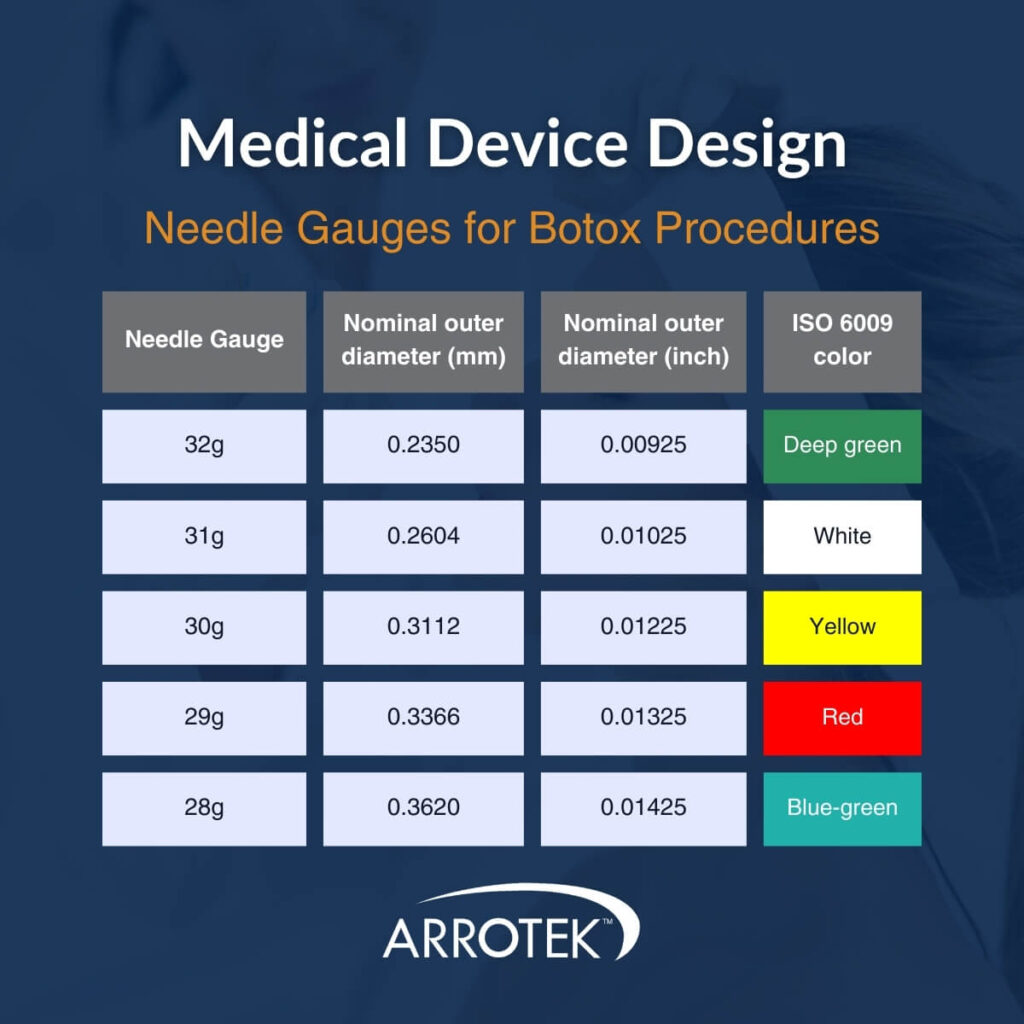Botox is a well-established cosmetic treatment where botulinum toxin is injected into target areas on a patient’s face to reduce the appearance of wrinkles. While it is a well-established procedure, innovations in the design and development of Botox needles continue to advance, often with a focus on improving patient comfort and ease of use.
Improving patient comfort primarily involves reducing pain and trauma. In simple terms, the smaller the needle, the less discomfort, pain, and trauma the patient will experience.
Micro Botox needles can significantly improve patient comfort, but they can also be more difficult for practitioners to use as they can be more flexible. The types of materials used in the design of the device, the interaction with the syringe, and the design of the various components of the needle all contribute to the performance characteristics that can be achieved.
This medical device design guide highlights the main considerations when developing needles for Botox and similar procedures.
Needle Gauge
One of the biggest design considerations when developing micro-sized Botox needles is the needle gauge. Needle gauge describes the width of the needle and is represented with the letter “g”. So 32g is a 32-gauge needle.
In the needle gauge unit of measurement, the higher the number the smaller the diameter of the needle. This means, for example, a 32g needle has a smaller diameter than a 22g needle.
Botox procedures are commonly completed using 30g needles but there is continuing innovation in the development of smaller gauge needles that optimise patient comfort even further. The following table shows the nominal outer diameter dimensions for needles commonly used in Botox procedures:

There are two other considerations to factor into the design of a Botox needle when considering gauge:
- Inner diameter
- Wall thickness
As an example, a standard 32g needle will have an inner diameter in the region of 0.235mm and a wall thickness of 0.064mm. A thin wall design will have a wall thickness that is even smaller, increasing the size of the needle’s inner diameter.
Needle Length
A common length for Botox needles is 8mm although they can range in length from 4mm to 13mm. There are a number of factors to consider when determining the length of Botox needles during the development stages of the medical device design process:
- Procedural requirements – Botox treatments involve injecting the botulinum toxin into specific muscles. This temporarily paralyzes the muscles, reducing the appearance of wrinkles. The needle used in the procedure must be long enough to reach the target treatment area.
- Stiffness – longer micro-sized needles (in the region of 32g) can become more challenging for practitioners to control as they are often more flexible than larger needles.
- Patient anxiety – patients with a fear of needles can have their anxiety levels reduced when the needles used in the procedure are small and short.
Tip Geometry
The design of the tip of the needle influences the penetration force required by the practitioner to effectively insert the needle through the patient’s skin. A key consideration is the angle of the bevel, with smaller angles making it easier to insert the needle.
Micro Botox Needle Support and Advice at Arrotek
At Arrotek, we have extensive experience designing and developing novel medical devices for a range of clinical applications, including cosmetic procedures such as Botox. In addition to our medical device design experience, we also have needle manufacturing capabilities that include the production of needles as small as 32g.
To speak to our team about your product idea, micro Botox needles specifically, or any other medical device design or manufacturing enquiry, please get in touch today.





